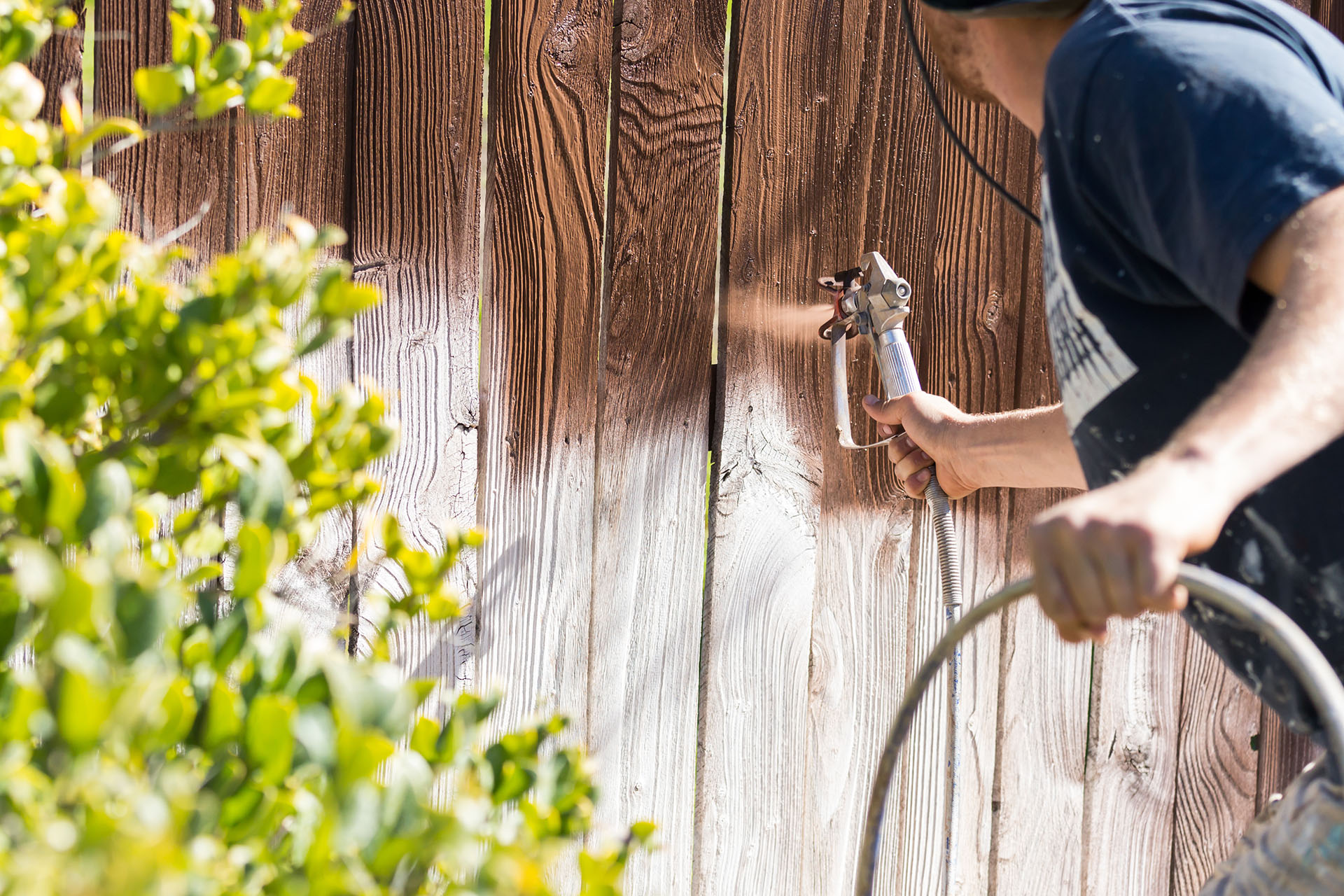Preserve Your Fence's Stability with Expert Fence Cleaning Near Me
Wiki Article
Important Tips for Deck Staining Success
Achieving a perfectly stained deck requires more than simply a brush and a canister of discolor. From picking the ideal kind of discolor to understanding the art of application, each stage plays a crucial function in the final result.Choosing the Right Stain
Picking the suitable tarnish is vital in accomplishing a long lasting and visually pleasing surface for your deck. fence staining franklin. When selecting a stain for your deck, it is necessary to consider elements such as the wood type, desired shade, degree of security needed, and upkeep preferences
To start with, take into consideration the kind of wood your deck is constructed from, as various wood species might respond in a different way to specific kinds of discolorations. Hardwoods like oak or mahogany might need different discolorations compared to softwoods like want or cedar. Comprehending the attributes of the timber will assist you select a stain that penetrates effectively and boosts its all-natural charm.
Next, consider the shade you desire for your deck. Stains are available in a selection of hues, from natural tones that enhance the timber's grain to even more nontransparent colors that offer far better UV defense. Pick a shade that enhances your outside space and matches your aesthetic choices.
In addition, examine the degree of defense the discolor deals. Some spots offer a lot more comprehensive protection against UV rays, dampness, and mold, which can lengthen the life of your deck. Balancing security with appearances is key to accomplishing a visually attractive and long-lasting surface.
Preparing the Deck Surface Area
To ensure a successful application of the selected tarnish, extensive prep work of the deck surface area is necessary. Begin by cleansing the deck completely to remove dirt, debris, and any kind of previous finishings. Utilize a deck cleaner or wood brightener in addition to a stiff-bristled brush to scrub the surface clean. Pay very close attention to areas susceptible to mold and mildew and mold growth. After cleaning, permit the deck to completely dry totally prior to continuing.Examine the deck for any type of harmed or rotten boards. Replace or fix these as needed to ensure the architectural honesty of the deck. Sanding the surface area may be needed to ravel harsh locations and remove any loose timber fibers. pressure washing near me. This action not only helps the stain adhere much better however likewise boosts the total appearance of the deck.
Using the Discoloration Effectively

When using the tarnish, use a paintbrush, roller, or sprayer , depending on the kind of tarnish and the dimension of the deck. Apply the stain in the direction of the wood grain to make sure even protection and an expert surface.
Enable the very first coat to dry totally prior to making a decision if a 2nd coat is required. Adhere to the maker's directions relating to drying times and reapplication. Proper application of the tarnish is vital for protecting your deck and boosting its appearance for several years to find.
Maintaining Your Stained Deck
After effectively applying the discolor to your deck, maintaining its look and safety top qualities is crucial for lasting longevity and visual appeal. Routine upkeep is vital to protecting the elegance and integrity of your tarnished deck. Resolving issues immediately can stop them from aggravating and extend the life of your stained deck.

Troubleshooting Common Issues
Determining and attending to common problems that may emerge with your stained deck is important for ensuring its durability and ideal performance. One typical trouble is peeling or flaking of the stain. This can occur because of inadequate adhesion triggered by insufficient surface prep licensed fence contractor work or applying the stain in negative weather. To correct this, the influenced areas need to be stripped, sanded, and correctly re-stained following producer standards.Another concern frequently experienced is mold and mildew and mildew growth on the deck surface area. This can be associated to moisture retention, like it lack of sunshine, or improper air flow. To tackle this issue, a comprehensive cleaning with a mold and mildew and mold eliminator followed by appropriate drying and application of a mold-resistant discolor is vital.
Moreover, fading of the stain color over time is a common problem. UV exposure and harsh climate can trigger discoloration. To address this, choosing a top notch, UV-resistant tarnish and using a fresh layer occasionally can help maintain the deck's aesthetic allure.

Verdict
To conclude, successful deck staining requires choosing the right discolor, effectively preparing the deck surface, applying the discolor properly, and preserving the tarnished deck. By following these necessary pointers, you can achieve a magnificently discolored deck that improves the total appearance of your outdoor space. Keep in mind to fix any kind of typical concerns that might develop throughout the discoloration procedure to make sure a durable and visually enticing outcome.Accomplishing a faultlessly tarnished deck calls for more than simply a brush and a canister of stain.To guarantee a successful application of the picked tarnish, complete prep work of the deck surface area is necessary. When applying the discolor, use a paintbrush, roller, or sprayer , depending on the type of stain and the dimension of the deck.Recognizing and resolving common problems that may occur with your stained deck is vital for guaranteeing its long life and optimal performance.In final thought, successful deck staining calls my latest blog post for selecting the ideal tarnish, effectively preparing the deck surface area, using the stain correctly, and keeping the discolored deck.
Report this wiki page